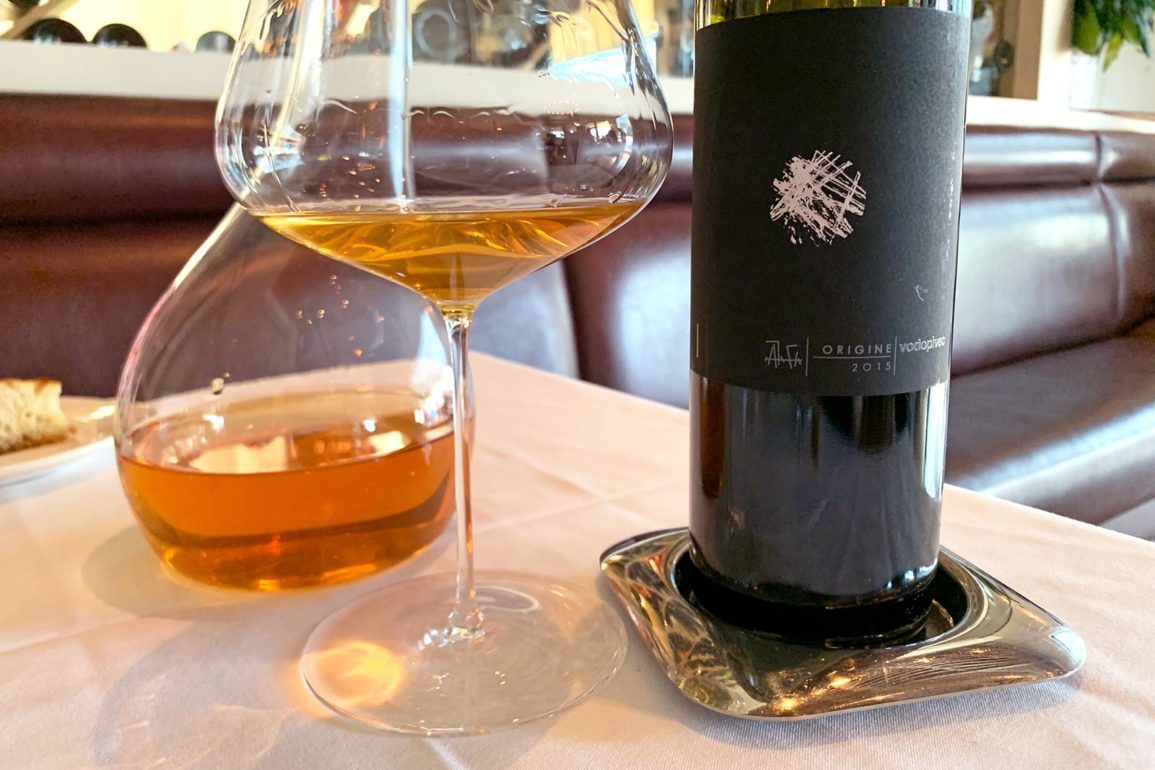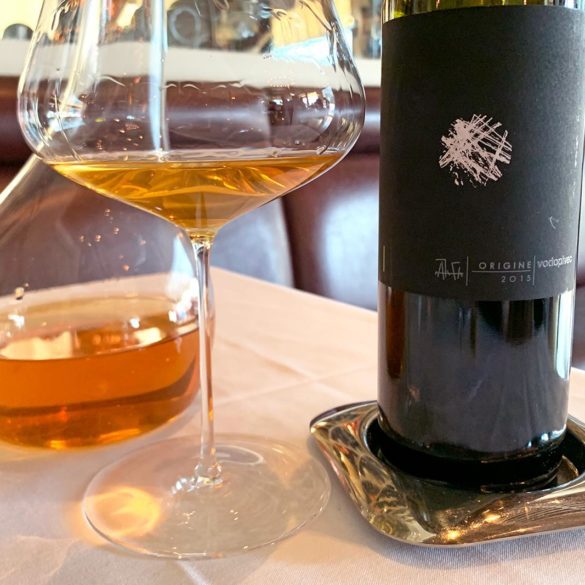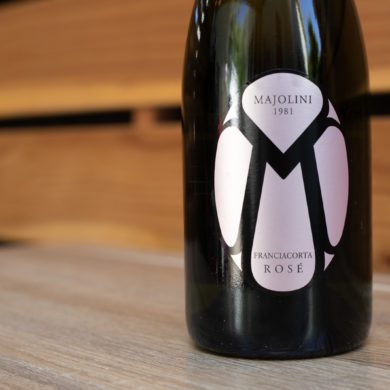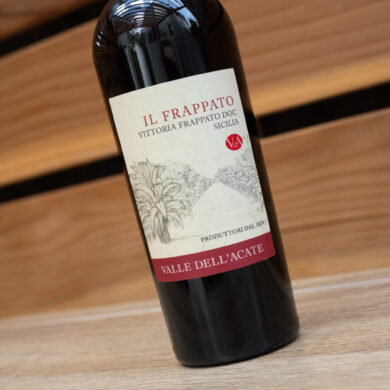Here is a wine to super-charge your curiosity: the 2015 Vodopivec “Origine” Venezia-Giulia Vitovska. Once again we are headed to the borderland region where Italy and Slovenia meet, a place that produces some of the most captivating wines on earth. Wines that, I might add, we’ve been profiling quite a bit this year: Gravner, Radikon, Borgo del Tiglio, Ronchi di Cialla and now, Vodopivec.
However, ask me if I had to choose just one bottle between any of them, and I would unquestionably reach for this Vodopivec.
Paolo Vodopivec personifies (for lack of a better word) the “niche-iness” of Friuli nicely. This is a winemaker who has brushed aside the business model of “a portfolio of wines” and is instead seeking mastery of one single thing. On his agriturismo in Friuli, Paolo once tended pigs, made cheese and raised flowers. But in 1997, he planted Vitovska and shifted his focus to wine. It is as though he took a vow to Vitovska, eschewing Terrano and Tazzalenghe (the grape they call “tongue cutter” locally), and especially the international darlings of Friuli: Merlot and Sauvignon Blanc. Vitovska it would be.
This curious grape is most certainly indigenous, but like many things in the area, it has no concern for manmade borders: it could originally be Slovenian, or it could be Italian. They do not know conclusively, but it doesn’t really matter. What is confirmed is that Vitovska is from the Carso (or Kras in Slovenia), the geologically unified area that straddles the border where a narrow strip of land seems to point toward Croatia.
Light in nature, the wine grape has a wonderful tendency to transmit the stoniness of the soil from which it comes: Vitovska’s finish is meant for contemplation, and Vodopivec’s “Origine” Vitovska lingers like a sustained piano note.
As I dug a little deeper, I grew mystified by his processes. Vodopivec uses a traditional basket press for all of his wines and prefers fermentation in buried clay amphora — a wonderful choice for winemakers seeking a neutral flavor profile and a smidge of oxygen during élevage. But the “Origine” is a little different. After de-stemming, the wine macerates in an open-top, Slavonian oak vat for between two to four weeks. This is where the soul of Vitovska and the vineyard emerges, coloring the wine with a brilliant amber hue and infusing it with the inexhaustible aromas and tones of stone fruit, orange blossom and lemon verbena. The wine is then given 36 months of self-discovery in large, neutral oak casks — where some of the wonderful, shape-shifting tertiary aromas are likely born — before a small application of sulfur at bottling.
This wine nearly made me fall out of my chair. Friuli was already on my travel radar, but Paolo Vodopivec moved it toward the top of the list. I’ll be knocking on his door, no doubt, when I get back over there.
2015 Vodopivec “Origine” Venezia-Giulia Vitovska
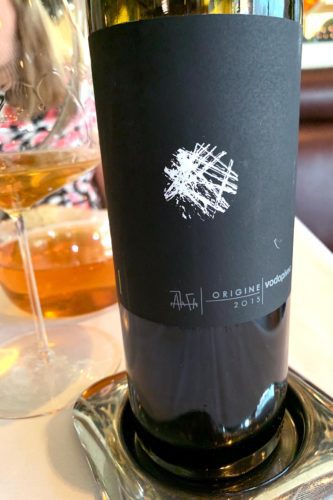 Venezia-Giulia IGT (Friuli-Venezia Giulia)
Venezia-Giulia IGT (Friuli-Venezia Giulia)
Grapes: Vitovska (100%)
Alcohol: 12.5%
Opinion: ★★★★★ (out of five)
Food-friendliness: Impeccable
Value: As expected
Learn more about our wine icons.
A beginner might like … the color. It’s OK to judge this book by its cover: that radiant amber is gorgeous to look at, and if you are new to orange wines, it will certainly trigger your curiosity. However, looks only go so far. You still need substance, and in that regard — aromatically, texturally, taste-wise — this wine might just step on the accelerator of your fledgling wine obsession.
A wine obsessive might like … the subtle complexity. You may have encountered the power of Gravner and the musings of Radikon, but this wine engages the senses is a very different way. In fact, it may reset the bar on what “elegance” in a wine means to you. It certainly did for me. There are more than a few whispers rising from this glass, so only open when you can lend it your attention fully. It is a quiet masterpiece.
Note: This wine was purchased with our editorial budget thanks to subscribers like you. Grazie mille! Also, aiding my research for this piece are two indispensable books for any Italian wine obsessive: Native Wine Grapes of Italy by Ian d’Agata and Friuli Food and Wine by Bobby Stuckey MS, Lachlan Mackinnon-Patterson and Meredith Erickson.
